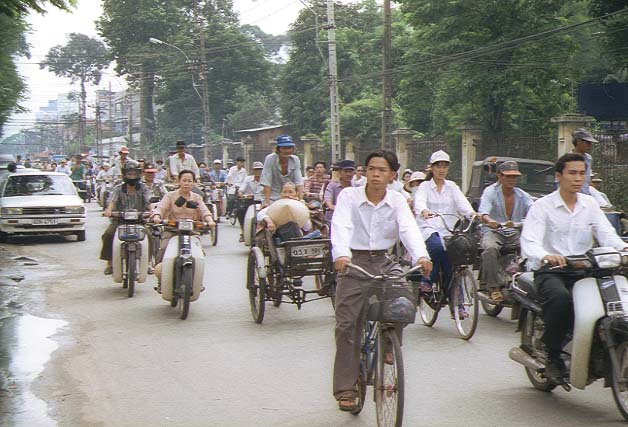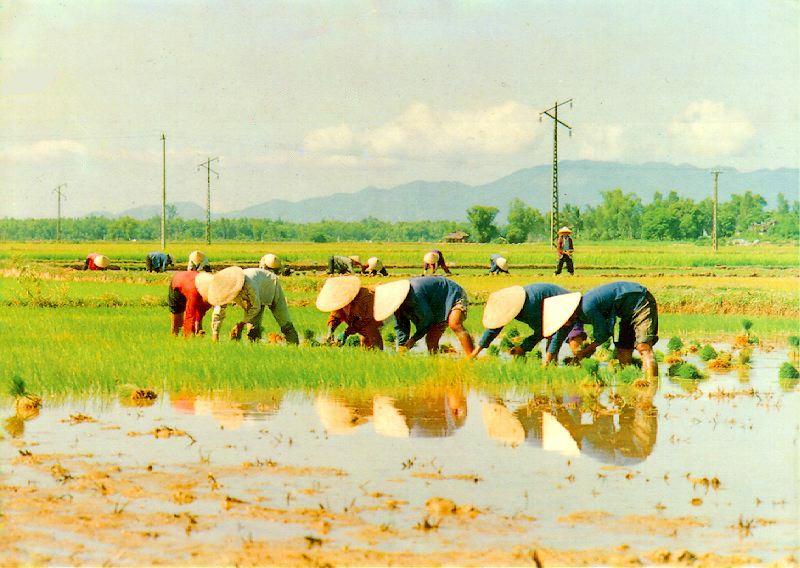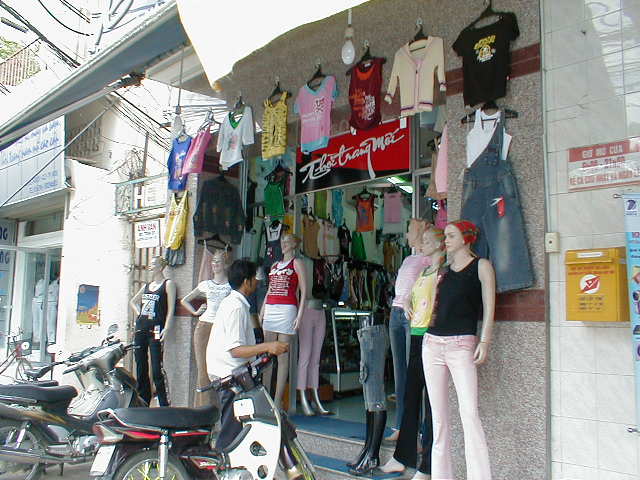When you think of the context of modern Viet Nam, think War, then Depression and Baby Boom, followed by significant economic development and integration with the global economy but starting from a fairly low industrial base.
 The term "modern Viet Nam" is certainly a complex and sometimes contradictory one. The guy driving a Mercedes steers around a construction worker ferrying a load of bricks by bicycle rickshaw. The water buffalo is still the preferred power source for ploughing rice paddies, while the farm girl might rest a moment from harvesting rice by hand to answer the latest flurry of instant messages on her cell phone. Most everyone in the city has a refrigerator, but restaurants get their ice delivered...by motorcycle.
The term "modern Viet Nam" is certainly a complex and sometimes contradictory one. The guy driving a Mercedes steers around a construction worker ferrying a load of bricks by bicycle rickshaw. The water buffalo is still the preferred power source for ploughing rice paddies, while the farm girl might rest a moment from harvesting rice by hand to answer the latest flurry of instant messages on her cell phone. Most everyone in the city has a refrigerator, but restaurants get their ice delivered...by motorcycle.
 It is a country of young people. During the school lunch break, the streets swarm with kids. During rush hour, surges of adolescence energy flow through the traffic in palpable waves. In the cities, the young pride themselves on their style: jewelry, dyed hair, the latest cell phone, the nicest motorcycle their parent's money can buy, hanging around a coffee shop with friends or at the Internet cafe, chatting and watching the latest music videos. Impressive, the reach of the Global Youth Culture: the music, dress, hair of the Urban Hip is virtually an international standard. The young here pick it up from 2 sources, one of which is the Japanese kids, who put an Asia flair on West Coast US style and are the trend setters in Asia. The other is direct from the US by way of returning second-generation Viet Kieu (overseas Vietnamese), the sons and daughters of the Boat People...the new American invaders.
It is a country of young people. During the school lunch break, the streets swarm with kids. During rush hour, surges of adolescence energy flow through the traffic in palpable waves. In the cities, the young pride themselves on their style: jewelry, dyed hair, the latest cell phone, the nicest motorcycle their parent's money can buy, hanging around a coffee shop with friends or at the Internet cafe, chatting and watching the latest music videos. Impressive, the reach of the Global Youth Culture: the music, dress, hair of the Urban Hip is virtually an international standard. The young here pick it up from 2 sources, one of which is the Japanese kids, who put an Asia flair on West Coast US style and are the trend setters in Asia. The other is direct from the US by way of returning second-generation Viet Kieu (overseas Vietnamese), the sons and daughters of the Boat People...the new American invaders.
 District 1, the core of Saigon, reminds me of some ways of Manhattan: it's certainly part of the country, but is THAT the real country? (yes the name is Thanh Pho Ho Chi Minh, Ho Chi Minh City, but it sits by the Saigon River and Dist. 1 is still called Saigon...political correctness and politeness determine which name to use). Outside the urban core provides a better picture of the situation. 70% of the population still lives in the countryside. The per-capita income is about $300 US, but that is somewhat deceptive because the disparity in income between the rural and urban areas is dramatic.
District 1, the core of Saigon, reminds me of some ways of Manhattan: it's certainly part of the country, but is THAT the real country? (yes the name is Thanh Pho Ho Chi Minh, Ho Chi Minh City, but it sits by the Saigon River and Dist. 1 is still called Saigon...political correctness and politeness determine which name to use). Outside the urban core provides a better picture of the situation. 70% of the population still lives in the countryside. The per-capita income is about $300 US, but that is somewhat deceptive because the disparity in income between the rural and urban areas is dramatic.
 People are busy. The average work week is 5 1/2 days (half Saturday), but it is not at all unusual to find people working 12 hours a day 6 days a week. Here's an actual job description: work at a stand selling fruit smoothies. Start at 6am, close at 10pm, 7 days a week. No special skills or education needed. Monthly salary: 600,000vnd, about $40. A schoolteacher, nurse, or traffic cop makes $50 to $70 a month.
People are busy. The average work week is 5 1/2 days (half Saturday), but it is not at all unusual to find people working 12 hours a day 6 days a week. Here's an actual job description: work at a stand selling fruit smoothies. Start at 6am, close at 10pm, 7 days a week. No special skills or education needed. Monthly salary: 600,000vnd, about $40. A schoolteacher, nurse, or traffic cop makes $50 to $70 a month.
One thing the government did right was with the education system. The literacy rate is over 95%. English is the foreign language of choice, a foreign visitor will be regularly implored to practice speaking with an earnest local learner (who are not always young either!)
Modern Vietnamese culture is very vibrant: there are vast local music, entertainment, and fashion industries. It seems that Vietnamese are not very defensive about outside cultural influences, nor worry about the negative influence of the "West", at least openly. Celine Dion is quite popular, as is Karen Carpenter (but people only know her voice, not her name or her fate).
|

